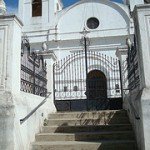Train Travel around Buenos Aires, ..
January 30th, 2012Having Fun!
I’m up to short rips in and around Bs As, ……. Train Travel Tour trip in Argentina.
First as to the country as a whole, there are several options open for the traveller interested in train journeys around this beautiful country, from the northern train in the sky to the southern most train at the end of the world, from the mountain trains to the amazing jungle train. These are all old train lines, original, from the early 19 and 20th century. And in spite of the fact that some of these where even more comfortable and far more developed then, when they started working over 100 years ago, than they are now nowadays, by the way its amazing the destruction that the railway lines have been thru in South America, they are still very interesting and exciting trips to take, more like adventure travel than let us say a gentleman Tour, but well its for the fun …….
Anyway, you will be away from the modern comfort of the latest technology trains from Japan and Europe, these vintage original trains still hold that old charm and ways the old lines had. But aslo keep in mind that some of the Railway Lines are badly and are in porr condition, speed on the train sometimes is at a walking rate, time tables and scheduales are and frequently changes, so its an adventure in more ways than one, …..
La Trochita! This trip is a must to all those train and steam engines fans, but also a terrific option for all those travelers wanting to experience the old trails here Argentina. So see my Photo Gallery on La Trochita! I will be placing up on line more information on the different options for any traveler interested…. Bob Frassinetti

